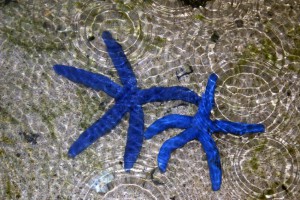One goal of drug discovery and research programs is to reduce false hits as early as possible in the process. Follow-up on false hits is costly in terms of time and resources, and the longer the false hits remain in the drug development pipeline, the more costly they are. So methods that can easily reduce the number of false hits during compound screening early in the discovery process are particularly sought after.
Reporter assays have proven to be invaluable tools for elucidating the mechanisms of action of small molecules or other agents on signaling pathways within cells, and the luciferase reporter assay has become a standard research tool in the biological research laboratory.
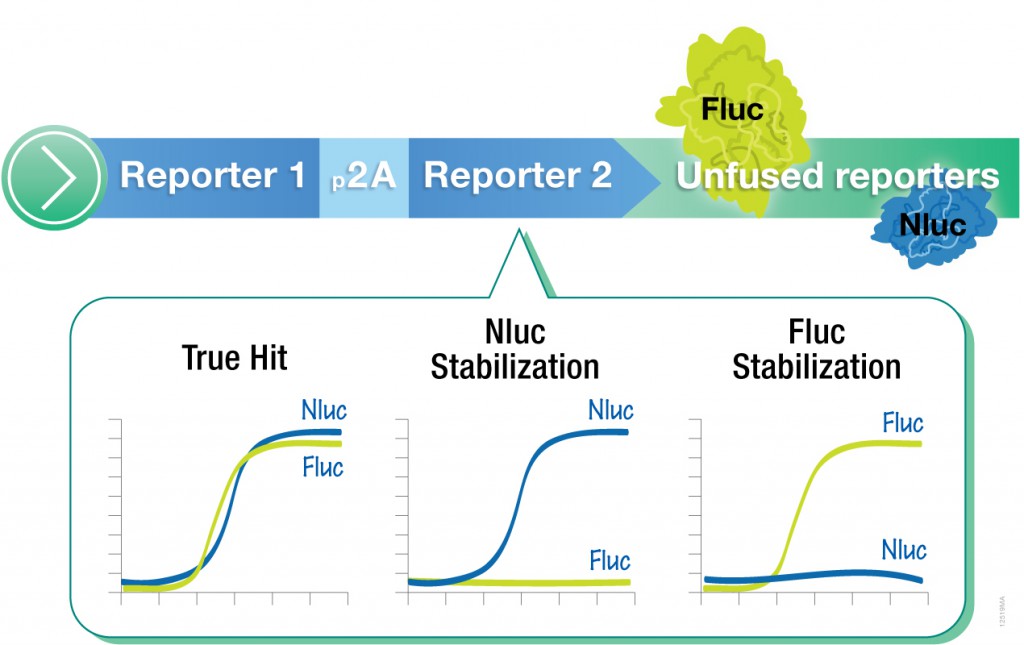
However, one caveat of using standard luciferase-based reporter assays for larger-scale compound screening efforts is the frequency of false hits that result from direct interaction of compounds with the luciferase reporter. This issue can be mitigated with a “coincidence reporter” system where two independent reporter proteins are produced from a single transcript. In this type of assay, a bicistronic transcript is stoichiometrically translated into two nonhomologous reporters by means of a 2A “ribosomal skipping” sequence. Since it is unlikely that compounds will interact with two distinct types of reporter, “coincident” responses will indicate on-target activity. Such a coincident reporter system provides an important control against costly false hits early in drug discovery research programs.
A paper published online in ACS Chem Biol in February describes the first successful application of the firefly/NanoLuc luciferase coincidence reporter system to identify new pathways that up-regulate PARK2 expression.


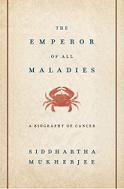
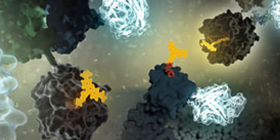
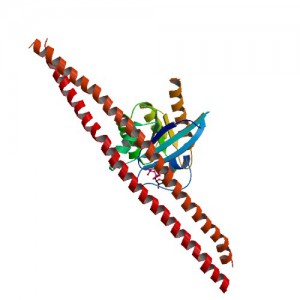
 Curling up with a good book is one of life’s greatest pleasures, whether you’re reading on a tropical beach while on vacation or nestled into your favorite chair at home. As your eyes skim over the words, your mind conjures up images of the events unfolding on the page. Books can take us to fantastic places, real and imaginary, that we will never visit in our lifetime. And while there is some pleasure to be gained from nonfictional books, my favorite books all seem to fall in the realm of fiction. I am not alone. The science fiction and fantasy genre of literature continues to be one of the most popular. Why do so many readers find these types of books so enticing and engaging?
Curling up with a good book is one of life’s greatest pleasures, whether you’re reading on a tropical beach while on vacation or nestled into your favorite chair at home. As your eyes skim over the words, your mind conjures up images of the events unfolding on the page. Books can take us to fantastic places, real and imaginary, that we will never visit in our lifetime. And while there is some pleasure to be gained from nonfictional books, my favorite books all seem to fall in the realm of fiction. I am not alone. The science fiction and fantasy genre of literature continues to be one of the most popular. Why do so many readers find these types of books so enticing and engaging?

 Every day we are bombarded by potential contagions: whether a physical ailment such as measles or influenza or something as seemingly harmless as a yawn or popular Internet meme. For better or worse, emotions can be contagious too, passed on from one person to another through verbal and nonverbal cues, with or without the awareness that we are being affected by another person’s emotional state. In many cases, the only route for such transmission is observation. For example, who hasn’t felt better after watching an uplifting film or cried while watching a sad movie. In the lab, scientists have determined that levels of the stress hormone cortisol increased in individuals undergoing a stress test but also in passive observers who watch the stress test through a one-way mirror or on a television screen. Often, the magnitude of the observer’s response is affected by how well he knows or can relate to the person.
Every day we are bombarded by potential contagions: whether a physical ailment such as measles or influenza or something as seemingly harmless as a yawn or popular Internet meme. For better or worse, emotions can be contagious too, passed on from one person to another through verbal and nonverbal cues, with or without the awareness that we are being affected by another person’s emotional state. In many cases, the only route for such transmission is observation. For example, who hasn’t felt better after watching an uplifting film or cried while watching a sad movie. In the lab, scientists have determined that levels of the stress hormone cortisol increased in individuals undergoing a stress test but also in passive observers who watch the stress test through a one-way mirror or on a television screen. Often, the magnitude of the observer’s response is affected by how well he knows or can relate to the person.